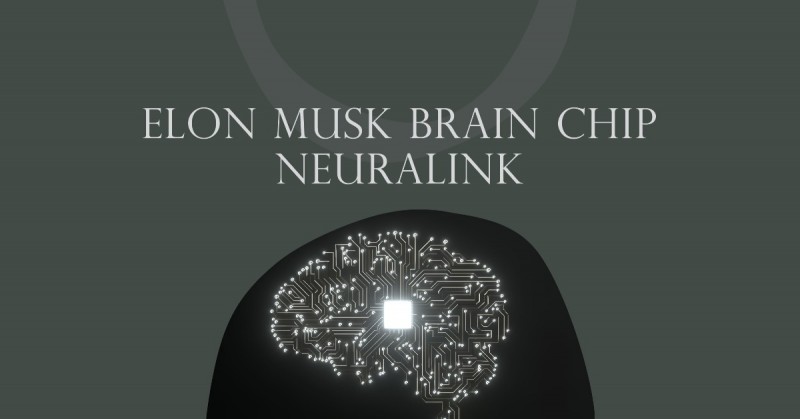
Introduction: The Visionary Mind of Elon Musk
Elon Musk, the enigmatic entrepreneur known for his groundbreaking ventures such as Tesla and SpaceX, continues to push the boundaries of human innovation. His latest endeavor, Neuralink, has captured the imagination of many, as it aims to bridge the gap between human consciousness and technology. In this article, we will delve into the realm of Elon Musk's brain chip, Neuralink, and explore the profound implications it holds for the future.
2.1 What is Neuralink?
Neuralink is a neurotechnology company founded by Elon Musk with the goal of developing implantable brain-computer interfaces (BCIs). These interfaces serve as a bridge between the human brain and external devices, allowing for bidirectional communication. The primary objective of Neuralink is to enhance human cognition, address neurological disorders, and enable symbiosis between humans and artificial intelligence.
2.2 How Does Neuralink Work?
Neuralink employs a system of ultra-thin, flexible electrodes, known as "threads," that are implanted into the brain. These threads enable high-bandwidth communication between neurons and external devices. Neuralink's advanced neural interface technology allows for precise and minimally invasive implantation, minimizing potential risks and maximizing efficacy.
3.1 Medical Applications of Neuralink
Neuralink holds great promise in the field of medicine. It has the potential to revolutionize the treatment of neurological disorders such as Parkinson's disease, epilepsy, and spinal cord injuries. By directly interfacing with the brain, Neuralink can restore motor functions, alleviate chronic pain, and provide real-time monitoring of neural activity, enabling more effective diagnosis and personalized therapies.
3.2 Enhancing Cognitive Abilities and Augmenting Human Potential
Beyond medical applications, Neuralink opens doors to expanding human cognitive abilities. By establishing a direct link between the brain and external devices, individuals may be able to augment their memory, learning capabilities, and even achieve brain-to-brain communication. This technology has the potential to redefine how we interact with information and collaborate with each other.
4.1 Privacy and Data Security
The integration of brain-computer interfaces into our daily lives raises significant concerns about privacy and data security. Neuralink must prioritize robust encryption protocols and user consent frameworks to ensure the protection of sensitive neural data. Transparent policies regarding data usage and stringent safeguards against unauthorized access are imperative to build public trust.
4.2 Ethical Implications of Brain-Computer Interfaces
As we navigate the uncharted territory of brain-computer interfaces, ethical considerations become paramount. Questions regarding agency, consent, and the potential for cognitive enhancement disparities need careful examination. Society must engage in thoughtful discourse and establish ethical guidelines to safeguard against the misuse of this transformative technology.
5.1 Restoring Motor Function in Paralyzed Individuals
One of the most promising applications of Neuralink is the restoration of motor function in paralyzed individuals. By bypassing damaged neural pathways, Neuralink can enable direct communication between the brain and prosthetic devices, allowing individuals to regain control over their movements. This breakthrough has the potential to significantly enhance the quality of life for people with spinal cord injuries.
5.2 Human-Machine Symbiosis and Collective Intelligence
Looking further ahead, Neuralink may pave the way for human-machine symbiosis and collective intelligence. By establishing interconnected neural networks, groups of individuals could potentially share thoughts, skills, and knowledge instantaneously. This merging of minds could unlock unprecedented collaboration and problem-solving capabilities, propelling humanity into a new era of collective intelligence.
Conclusion
Elon Musk's Neuralink represents a remarkable leap forward in our quest to integrate technology with the human brain. With its potential to revolutionize medicine, enhance cognitive abilities, and reshape the future of human interaction, Neuralink has captured the imagination of scientists, innovators, and the general public alike. While ethical considerations and privacy concerns must be addressed, the possibilities offered by Neuralink are awe-inspiring, and we stand at the threshold of a new era of human potential.
History of Bollywood: Explore the Origins of Bollywood and Its Evolution
Blaupunkt Introduces Atomik BB25, BB50 Boomboxes in the Indian Market